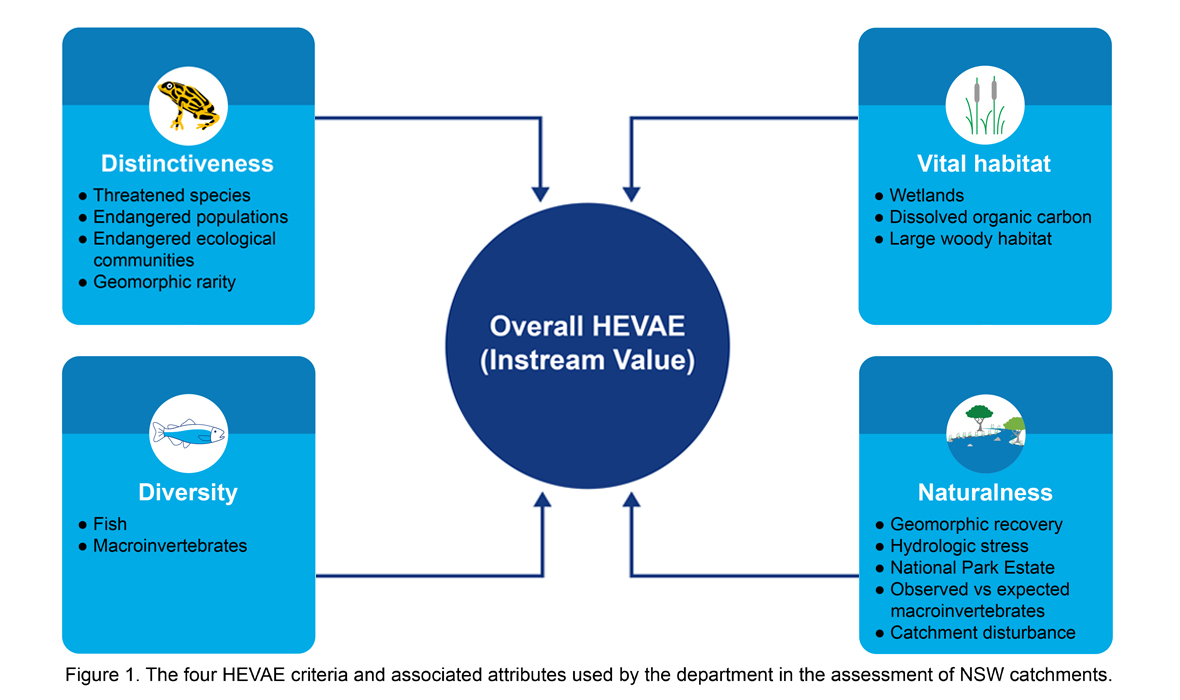The High Ecological Values Aquatic Ecosystems (HEVAE) framework identifies surface and groundwater systems with high conservation values and presents them as a spatial mapping tool.
Ecological value is how we perceive the importance of an ecosystem. We use the High Ecological Value Aquatic Ecosystems (HEVAE) national framework to assess the ecological value of rivers. This tool assigns an instream value to a length of river to determine the importance of each river relative to others. Identifying rivers of high importance or high value allows for their protection and enhancement. This is essential for water sharing rules in NSW rivers.
We rely on information and data from across government agencies for the HEVAE tool. Over time the tool has improved due to technology and new contemporary data. Our assessment has gone from a water source scale approach to a single reach approach. You can find the instream value of inland freshwater rivers and coastal rivers above the tidal limit using our HEVAE mapping tool.
Figure 1 shows the four HEVAE criteria used in our assessment of NSW river values. At present, in our assessment of coastal rivers, we are unable to include the vital habitat criteria as the data is not available. As more information becomes available for coastal rivers, we will include it. We also will include the fifth criteria, representativeness, for inland and coastal rivers as more information becomes available.
Overall HEVAE (instream value)

We use the HEVAE in our water sharing plan risk assessment work to describe the instream values that may be at risk from surface water extraction. We also use the HEVAE in combination with other tools to assess change in river condition. A detailed technical report (PDF, 2566.52 KB) outlines how the HEVAE framework has been applied in NSW.